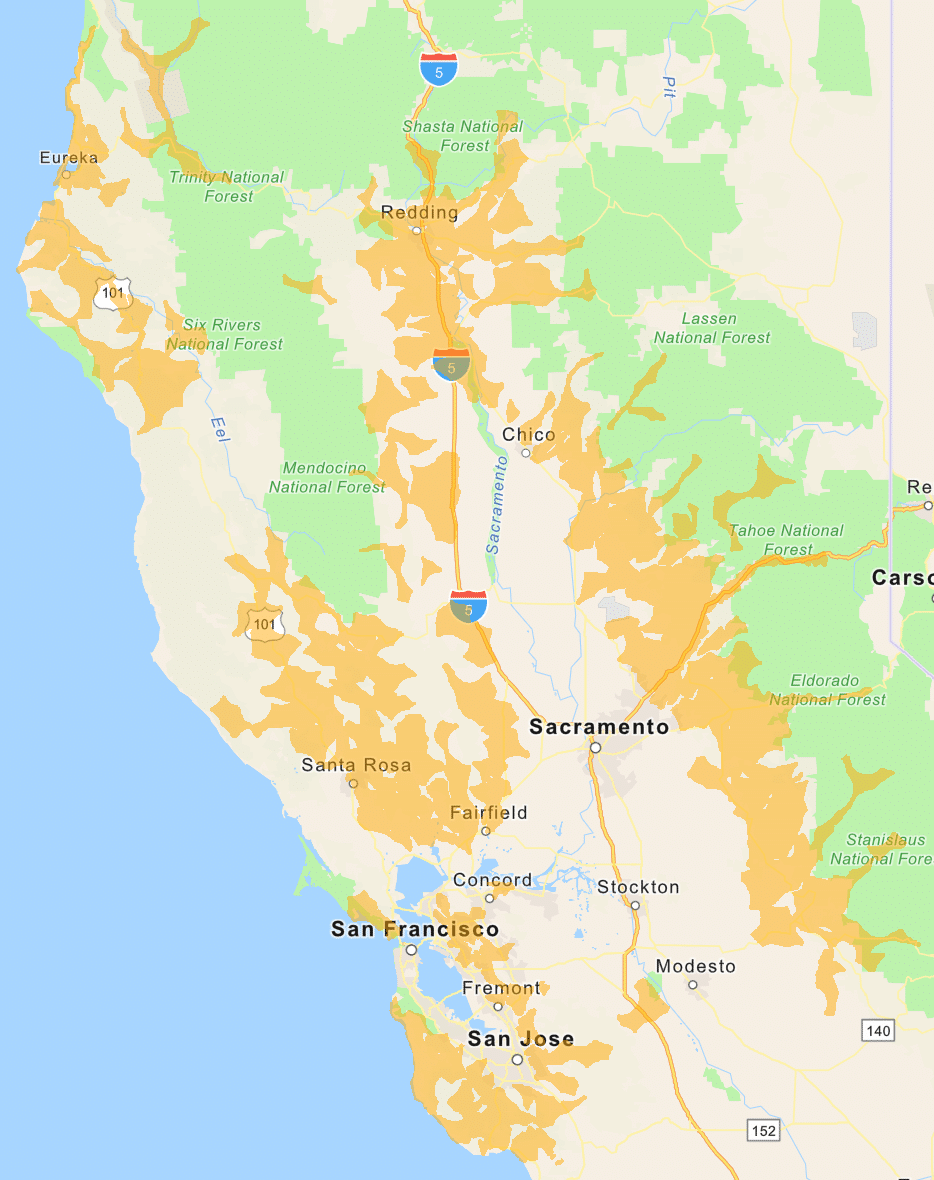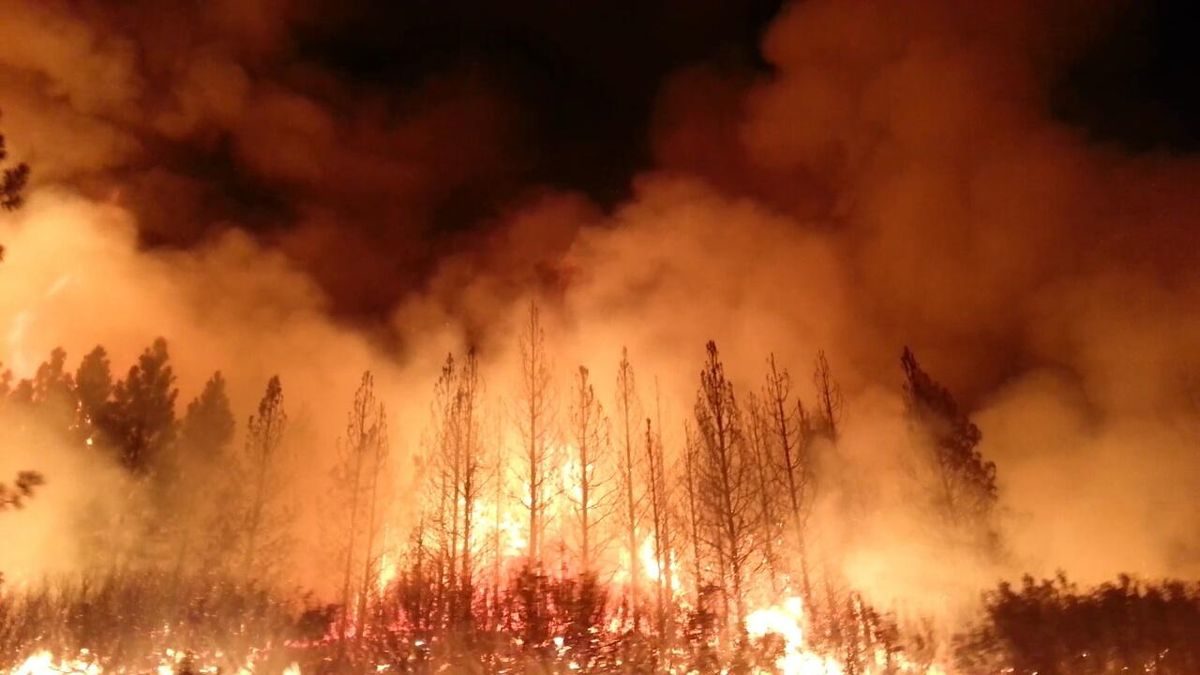As has been well documented, Pacific Gas and Electric Company (PG&E) has begun Public Safety Power Shutdowns across California, including customers in the San Francisco, Oakland and Sacramento metro areas, just to name a few. The shutdowns, being applied in three phases, are already affecting hundreds of thousands of Californians, some living just a couple miles outside of these big cities.
Specifically, the first phase affected just over 500,000 households, with the second phase affecting 234,000, and the third phase affecting 4,000. The below map outlines the areas currently and set to be affected by the outages.

In response to the shutdowns and the energy uncertainty they bring for the foreseeable future, Californians are taking measures into their own hands. Citizens across the state are turning to battery storage in order to provide backup power in case of a blackout, with the California Solar and Storage Association (CALSSA) sharing with pv magazine USA that “phones are ringing off the hook for contractors up and down the state.”
Those who have already installed systems on their roofs are looking to add battery backup, while those who had never even considered solar before are calling to get quotes on the solar + storage systems that they hope will get them through these uncertain times.
Residential solar company Sunrun reports a roughly 300% increase in website traffic week over week to our battery-related pages, with as much as a 1,500% increase to a battery-specific web page during the first round of outages earlier this month. Week over week, the site saw more visitors than any previous time in company history.
Yet it’s not just the big guns of the residential solar industry that are seeing a significant spike in demand. This is the experience of Colin Swan, founder, owner & CEO of Skytech Solar, a contractor based in San Francisco.
We’re probably getting at least three calls a day about batteries. And we’re not bringing it up, the customers are bringing it up to us. We’ve seeing a lot of sales now of batteries, I’d say 3-4 fold of what we’ve seen in the past.
Swan also shared that prior to the shutoffs, battery storage was really not a priority for most customers.
I’ve lived here 25, 26 years, I’ve never seen anything like this before. People just don’t want to be in the dark anymore. People who didn’t think about batteries at all before are now thinking about it.
Just up the road in Sacramento, Ed Murray, CEO and president of Aztec Solar and president of CALSSA shared that while some have known shutdowns were eminent for some time, nobody outside of PG&E was aware of the full scope.
“We were able to listen to the utility saying that there was going to be shutdowns because of all the lack of tree trimming they had done around transformers and power lines: that they were just behind on maintenance,” Murray told pv magazine.
We’ve had a lot of demand, we’ve had a lot of customers sign up. We are able to get product, fortunately. We’ve been around for a long time [so] we’ve been able to get product for our customers – which was a scare because we didn’t think we were going to be able to get LG Chems, but we’ve been using LG Chems with our systems.
Murray went on to share that, outside of that initial shock, he doesn’t think that installers around the state are in any danger of facing product shortages.
And, for anyone reading this who was affected by the first wave of outages: fear not! PG&E, in its benevolence, is offering a bill credit in recompense for the power shutoffs set to plague you for potentially the next decade.
https://twitter.com/PJCavan/status/1189640908108718081?s=20
If there is one thing to celebrate amongst the chaos, it’s that PG&E may have unknowingly prompted the first regional grid mass-exodus in the United States. Will every customer affected install batteries? No. Will even a majority of battery customers go entirely off-grid? Most likely, no. However if a utility can’t safely provide the basic function of a utility, customers are going to look for alternative sources to get the power they need, meaning the dream of a decentralized grid could well be fostered out of necessity in California.
This content is protected by copyright and may not be reused. If you want to cooperate with us and would like to reuse some of our content, please contact: editors@pv-magazine.com.









is it true that residential solar powered homes are “shut off” when grid is shut down for fear of energy flowing back to the grid endangering workers but there is an “island switch’ to avoid that and storage, powerwall or LG Chem batteries can enable complete power generation during outages?
Yes.
This is known as anti-islanding. A grid-tied solar power system is required by law to have a grid-tie system with an automatic anti-islanding function, which senses when a power outage occurs and shuts the house off from the grid until power is restored.
If a system has battery backup (lead acid, lithium, or NiFe, etc) an inverter powers some circuits in the house with solar production going to both those circuits and recharging the batteries.
“some circuits” means that when the system is installed some critical circuits are moved to a “critical loads” electrical panel which remain active when the grid is down as long as there’s battery power and/or sun. Typically refrigerators, some lights, and medical equipment. Typically, 240V appliances are not on the critical loads panel and won’t work when the grid is down.
PG&E has a particular reputation of “putting” off needed infrastructure work in the name of profits. For about the last 40 years PG&E has committed some stupidity in safety and public good is affected. Allegations are made, court cases are filed and even some reparations are determined. Then, another “incident” occurs. Now with the PSPS, sitting in the dark, because PG&E’s criminal board of directors have “decided” to file for financial forgiveness “once again” and are allowed to foist shutting power down to blocks of customers while high winds blow. When folks have to spend their own money to insure they have power during “storms”, then the utility becomes less important to the everyday operation of one’s home.
““We were able to listen to the utility saying that there was going to be shutdowns because of all the lack of tree trimming they had done around transformers and power lines: that they were just behind on maintenance,” Murray told pv magazine.””
The question to ask NOW, is just how much of a rate case will PG&E place before the CPUC in a time when PG&E (needs) to catch up on tree trimming and around the same time decommission Diablo Canyon nuclear by 2023. Ya’ think your electric rates are high and the grid is unreliable now, a financial storm is coming, how you deal with it will determine your understanding and public trust in PG&E.
1. I’ve obsevered people purchasing portable generators at hardware stores again. Solar and Energy Storage Systems would be a much better solution, depending on your requirements, for backup power.
2. I have been in the industry long enough to remember the “California electricity crisis, also known as the Western U.S. energy crisis of 2000 and 2001” which prompted both solar and energy storage to increase both the number of customers and companies resulting in more jobs in the renewable energy industry.
In other words, the lesson learned would be operations and maintenance jobs should now increase. If these other systems are installed, then they are not abandoned, but maintained?